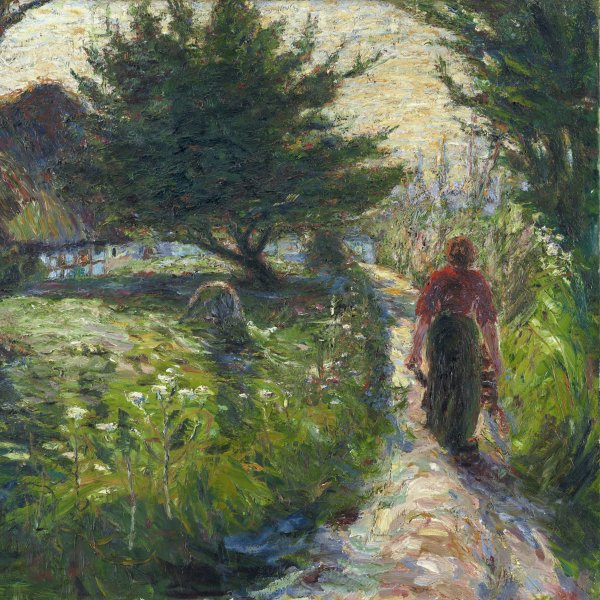Emil Nolde
A pioneer of German Expressionism, the painter Emil Hansen changed his surname to the name of his birth place, Nolde, in the province of Schleswig. Born into a peasant family, he was apprenticed to a furniture maker, attended night classes at the Kunstgewerbeschule in Karlsruhe and worked in various parts of Germany. In 1892 he moved to Sankt Gallen, in Switzerland, to teach drawing at the Kunstgewerbeschule. In 1898 he took up residence in Munich, where he aimed to devote himself fully to his career as a painter. He studied at different private academies and during 1899 he lived in Paris, where he attended the Académie Julian and was fascinated by the work of Vincent van Gogh and Paul Gauguin.
On returning Nolde lived in Copenhagen and met Ada Vilstrup, whom he married in 1902 and went to live with on the island of Alsen in 1903. In 1906 he accepted the invitation to join the Expressionist group Die Brücke (The Bridge). However, owing to the differences in age and temperament between him and his younger colleagues, he went his own separate way and concentrated on biblical themes. When the Berlin Secession rejected some of his pictures in 1910, Nolde became involved in establishing the Neue Sezession.
Emulating Paul Gauguin, in 1913 he embarked on an expedition to the Pacific organised by the German Colonial Office and had the chance to visit Russia and many Asian countries. The voyage put him in touch with many distant cultures, to which he was attracted, like most of the Expressionists. Having consolidated his reputation, in 1927 Nolde had a house built in Seebüll, very close to his birthplace and the border with Denmark, which became the seat of the Ada and Emil Nolde Foundation after his death.
Even though with the arrival of the National Socialists in power in 1933 Nolde joined the NSDAP (National Socialist German Workers' Party), his paintings were removed from museums in 1935 and about thirty of them were included in the Entartete Kunst (Degenerate Art) exhibition in 1937. Later, in 1940, the state confiscated his output of the previous two years, at which point Nolde started work on his extensive series of Unpainted Pictures, which he kept hidden in his Seebüll home.










